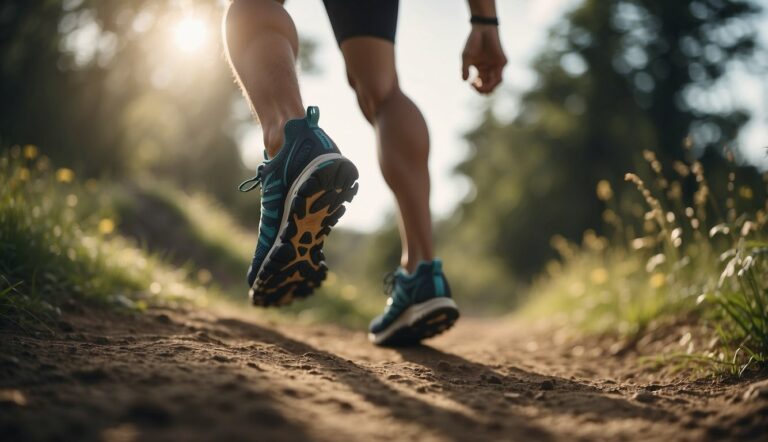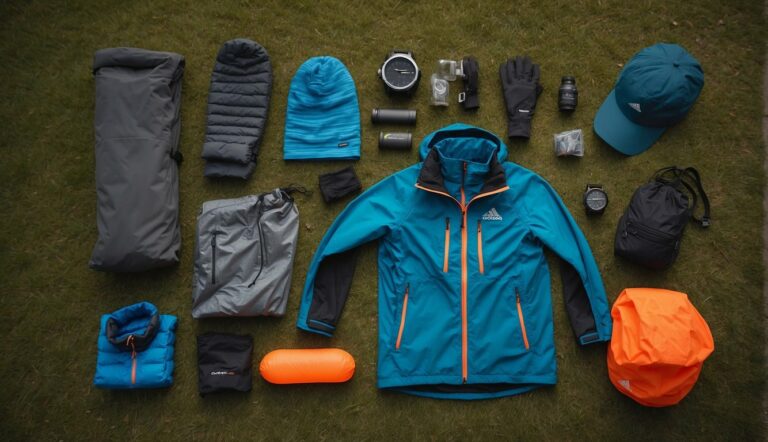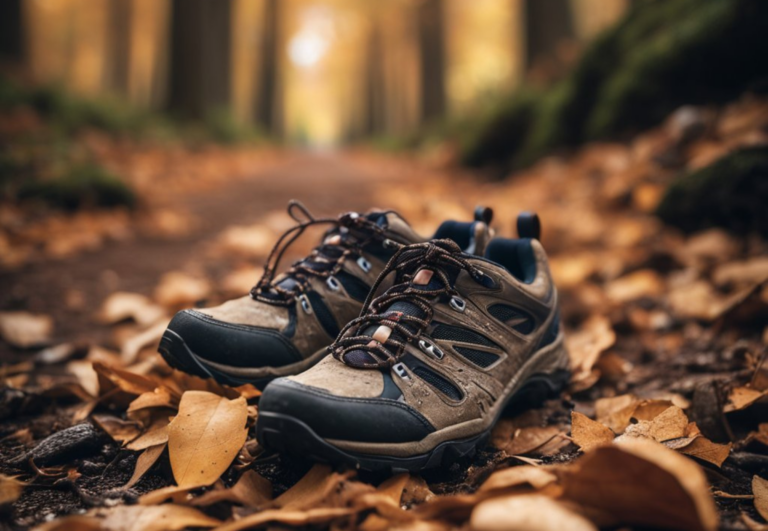Trail Maintenance and Upkeep Essentials for Trail Runners: A Guide to Sustainable Practices
As a UESCA certified running coach with years of trail running experience, I understand the critical role of trail maintenance in preserving the beauty and safety of our running paths. Whether it’s clearing debris or improving trail stability, maintenance ensures that trails remain accessible and enjoyable for all users. I advocate for each runner to take part in sustaining the trails we value, as our collective effort makes a significant impact.
For trail runners, being aware of and participating in trail maintenance isn’t just about keeping our routes navigable; it’s a responsibility to the environment and to other trail users. Simple practices, like sticking to existing trails to prevent erosion and reporting maintenance issues to authorities, go a long way. Additionally, volunteering for local trail cleanup days can enhance not only the trails but also the community that shares them.
Trail upkeep involves continuous learning and action. Knowing the basics of trail maintenance equips runners to minimize their impact on the environment while running. This includes avoiding trail widening by running through the middle, being mindful of wildlife, and leaving no trace post-run. My approach integrates respect for nature with the passion for running, embodying a sustainable relationship between trail runners and the trails they love.
What Is Trail Maintenance?

Trail maintenance is vital for preserving natural resources and ensuring safe passage for trail runners like me. It involves regular care to prevent erosion, maintain proper drainage, and uphold the trail surface quality.
Importance of Trail Maintenance
Maintaining trails is crucial for several reasons:
- Preservation of Natural Resources: I ensure trails are kept in good condition to protect the flora and fauna around them.
- Safety: A well-maintained trail minimizes the risk of injuries for runners by reducing hazards like loose rocks or slippery surfaces.
- Trail Longevity: Regular upkeep extends the life of a trail, preventing the need for major repairs.
Maintenance Fundamentals
To effectively maintain a trail, I follow these basics:
- Regular Inspections: Identifying and addressing issues early prevents larger problems.
- Routine Upkeep: Clearing debris and trimming overgrowth to keep the trail navigable.
Tools and Supplies:
Here’s a list of essential items for trail maintenance:
- Pruning shears
- Handsaw
- Rake
- Gloves
- Garbage bags
Erosion and Drainage Management
Erosion and improper drainage pose significant threats to trail sustainability:
- Erosion Control: Building features like water bars and check dams ensures the trail surface isn’t washed away by rain.
- Drainage Solutions: Properly designed and maintained drainage structures direct water away from the trail, preventing deterioration and puddling.
Drainage Structures Chart:
| Type | Function |
|---|---|
| Culverts | Channel water beneath the trail |
| Dips | Divert water off the trail |
| Trenches | Collect and funnel water to designated areas |
In my experience as a UESCA certified running coach, these maintenance practices protect both the environment and runners, making every trail run an enjoyable experience.
Trail Systems and Design

When trail runners seek out new adventures, the design and upkeep of the trail systems they traverse are vital. I focus on planning durable trails, creating environmentally-friendly pathways, guiding users effectively, and accommodating various activities.
Planning and Construction
The inception of a new trail begins with meticulous planning and construction. My objective is to design trails that blend with the natural contours of the land, minimizing environmental impact and making them sustainable for years to come. This involves thorough site assessments and understanding the terrain. I ensure that the pathways provide a safe and enjoyable experience for trail runners by incorporating adequate drainage and a stable tread surface.
- Site Assessment: Evaluation of terrain and environment.
- Pathway Layout: Aligning trails with the terrain’s natural shape.
Sustainable Trail Building
Sustainability is at the heart of every trail I design. I strive to balance the needs of runners with environmental preservation. This includes careful material selection and employing construction methods that prevent erosion. For instance, when working in a National Park, I follow the National Park Service’s guidelines to preserve natural habitats.
- Material Choice: Select durable, eco-friendly materials.
- Erosion Control: Utilize techniques that prevent trail degradation.
Signage and Information
Signage is crucial for trail safety and runner guidance. I prioritize clear and concise information panels and wayfinding signs. This helps runners navigate new trails confidently, knowing the distance they’ve covered and the terrain to expect ahead. My designs include:
- Wayfinding Signs: Indicate directions and distances.
- Informational Panels: Offer details about the trail and surrounding areas.
Multi-Use Trail Considerations
When designing multi-use trails, I consider the harmonious integration of different activities, such as running, biking, and hiking. I advocate for wide enough trails with clear markings to designate lanes for varying speeds and uses. This is to ensure everyone’s safety and enjoyment.
- Lane Markings: Distinct paths for different uses.
- User Guidelines: Information on right-of-way and trail etiquette.
By prioritizing these key components within trail systems and design, my intent is to lay the groundwork for sustainable, enjoyable, and safe trail running experiences.
Trail Etiquette and Leave No Trace

I understand that maintaining the trails we love involves more than just running on them. It’s about preserving these natural spaces for future enjoyment. Therefore, it’s crucial to adhere strictly to trail etiquette and the principles of Leave No Trace.
Adhering to Guidelines
To ensure that trails remain safe and accessible, I always follow trail rules and signs. This includes:
- Staying on marked paths to protect surrounding vegetation.
- Observing any posted guidelines for trail use, such as designated directions on certain days to reduce traffic conflicts.
Minimizing Impact on Nature
Part of respecting the trails is leaving them as I find them or better. I achieve this by:
- Packing out all trash, including food wrappers.
- Avoiding trail use when conditions could lead to trail damage, such as immediately after heavy rain.
Educating Others
When I encounter less experienced runners, I take the opportunity to gently inform them about proper trail etiquette. This includes:
- Sharing the importance of Leave No Trace principles.
- Demonstrating these practices on the trail to guide by example.
Practicing Stewardship
I view myself as a steward of the trails, and I partake in activities like:
- Volunteering for trail maintenance and cleanup days.
- Donating to local trail organizations that support the upkeep of trails.
Through consistent practice of these behaviors and sharing knowledge, I contribute to the ongoing enjoyment and sustainability of trail running environments.
Volunteerism and Community Involvement
In my experience as a UESCA certified running coach, I understand that trail runners have a unique opportunity to contribute to the trails we frequent. Volunteering not only maintains the paths but also fosters a sense of community and stewardship.
Participating in Events
I always encourage my runners to participate in trail maintenance events. These events are often organized by local or national park services and provide a hands-on way to give back to the trails. By joining events, volunteers contribute to conservation efforts and learn proper techniques for trail upkeep.
| Event Type | Description | How to Participate |
|---|---|---|
| Trail Work Days | General maintenance and cleanup activities. | Contact park services or trail groups to sign up. |
| Educational Workshops | Learning about sustainable trail use and maintenance. | Register through conservation organizations. |
Joining Volunteer Groups
Joining an established group focused on trail maintenance is a proactive step. Groups such as the American Hiking Society offer Volunteer Vacations, and local trail organizations regularly schedule work days. Groups provide not just labor but also advocacy for trail conservation.
- Local Groups: Typically organize around specific parks or regions.
- National Organizations: Provide broader support across multiple trail systems.
Public Involvement in Planning
Public input is vital in planning and maintaining trails. Parks often seek feedback from the local running community to understand usage patterns and needs. Taking part in public meetings and surveys is a crucial way volunteers can impact trail development and maintenance plans.
- Attend Public Meetings: Voice your concerns and suggestions.
- Participate in Surveys: Offer insights on trail conditions and usage.
Funding and Donations
I am aware that trail upkeep requires funding. Donating to trail organizations or contributing to fundraising efforts provides the monetary support necessary for extensive repairs and improvements. Financial contributions can make a significant difference in maintaining high-quality trails for all users.
- Direct Donations: Give to trail organizations or parks directly.
- Fundraising Events: Participate in or organize events to raise money.
Trail Maintenance Operations and Management
Trail maintenance is essential for the longevity of trails and the safety of its users. As a certified running coach, I ensure that proper operations and management are in place, focusing on establishing priorities, inspecting trails frequently, applying effective maintenance techniques, and managing safety and hazards.
Establishing Maintenance Priorities
The first step in trail maintenance is setting clear priorities. I assess which sections of the trail are used most frequently and require immediate attention, and I categorize maintenance tasks by their urgency and impact on trail runners. This approach ensures that the most critical areas are addressed first to maintain a safe and enjoyable environment.
Priority Levels:
- High: Issues posing immediate risk to safety, such as fallen trees or severe erosion.
- Medium: Problems that may develop into safety hazards, like growing trail wear or minor obstructions.
- Low: General upkeep tasks including litter removal and sign updates.
Trail Inspection and Survey
Regular inspections are crucial in identifying maintenance needs before they become serious issues. I conduct comprehensive surveys of the trails, noting conditions like erosion, potential obstacles, and signage clarity. This systematic approach to monitoring helps me keep the trails in top condition for runners.
Inspection Checklist:
- Trail surface and stability
- Drainage systems and water damage
- Signage and wayfinding
- Overhead and side hazards
Maintenance Techniques
Effective maintenance techniques are a core component of my approach. Depending on the issue, I may employ different strategies like reinforcing the trail surface, pruning overgrowth, or installing better drainage systems to prevent water accumulation.
Common Techniques:
- Surfacing: Adding gravel or other materials to stabilize the path.
- Drainage: Clearing or creating channels to divert water away from the trail.
- Vegetation Management: Trimming plants that encroach on the path.
Safety and Hazard Management
Ensuring runner safety is my primary concern. I identify potential hazards during my inspections and take swift action to mitigate them. I also consistently update safety signage and make sure the trails are clear of debris and obstructions that could cause accidents.
Hazard Management Actions:
- Remove or mark tripping hazards.
- Repair or replace damaged infrastructure.
- Update trail users on current conditions and closures.





